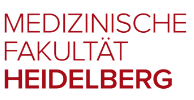Evaluation of the bioactive glass 45S5-BG as universal treatment option for different bone tumors and identification of the mechanisms mediating tumor cell specificity
Unfortunately, the effectiveness of existing therapies for bone tumors and the associated prognosis for the patient have improved only slightly in recent decades. Therefore, new therapeutic strategies that can replace or complement conventional therapies are urgently needed. In addition, tumor growth and the necessary surgical interventions often lead to the development of bone defects, which also need to be treated. In previous studies, we demonstrated that the bioactive glass 45S5-BG, which is already used clinically mainly for the treatment of bone defects, mediates a strong cytotoxic effect on the neoplastic cells of the giant cell tumor of bone, whereas non-neoplastic mesenchymal stromal cells are not negatively affected in growth.

Selective, cytotoxic effects of bioactive glass on neoplastic cells of giant cell tumor. (vital cells = green; dead cells = red (see also pressrelease "Deutsche Krebshilfe").
Since the osteogenic properties of bioactive glasses are well described, these data indicate that the use of bioactive glass represents a promising approach for the simultaneous reduction of tumor recurrence and the treatment of bone defects.
The aim of this study is to analyze, whether bioactive glass might also be an option for the treatment of other bone tumors like osteosarcoma and chondrosarcoma. To answer this question, multiple techniques of molecular biology, immunohistochemistry, biochemistry and microscopy will be applied as well as a chorioallanthoic membrane (CAM) assay to simulate the in vivo environment and to replace and reduce animal experiments.

This study is supported by "Deutsche Krebshilfe".


